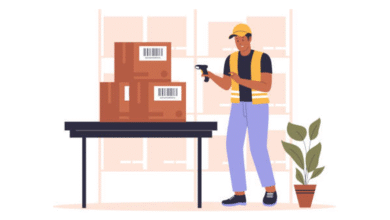Are Prime Day Discounts Really That Good? How to Spot Fake Deals

Prime Day is widely seen as a golden opportunity to grab top products at unbeatable prices—but is everything truly a deal? Many shoppers are surprised to find that some so-called discounts are not as generous as they appear. In fact, inflated list prices and misleading sales tactics are more common than most people realize.
To get real value during Prime Day, it’s important to know how to separate genuine deals from promotional noise. Whether you’re shopping for electronics, home upgrades, or trending items like robotic devices, understanding how to identify fake discounts can save you time and money.
How Fake Deals Work
One of the most common tricks is price manipulation. Sellers often raise the original price of an item in the days or weeks leading up to Prime Day, only to discount it back to its typical level and present it as a major saving. This creates the illusion of a deep discount when, in reality, you’re paying the usual price—or sometimes even more.
That’s why relying on percent-off labels alone is risky. Instead of asking “how much am I saving,” a better question is, “what does this item usually sell for?”
Spotting Real Value
True deals are based on actual price reductions from standard retail levels. These discounts are often limited in quantity or time, and they usually appear early in the event. To identify them, it helps to track prices before Prime Day begins. This way, you’ll know which offers are legitimate markdowns and which are simply repackaged versions of everyday prices.
Another smart strategy is to focus on categories that consistently deliver strong value during sales events. For example, pd robot deals tend to attract attention not just because of demand, but because they often include significant savings on high-performing products. However, not all listings under this category reflect genuine discounts—some are older or lower-quality models positioned as must-have items.
See also: charging piles for electric vehicles: powering the shift to clean mobility
Warning Signs to Watch For
When shopping Prime Day deals, keep an eye out for common red flags:
- Sudden, unusually high “original” prices just before the event
- Overuse of urgency tactics like countdown timers and fake low-stock alerts
- Vague or limited product descriptions with minimal detail
- Poor customer reviews or suspiciously perfect ratings
- A flood of similar listings with small variations, making comparison harder
If a deal seems too good to be true, take a moment to cross-check its pricing history and real-world performance. Being thorough can make the difference between saving money and wasting it.
Smarter Shopping on Prime Day
The goal of shopping Prime Day isn’t to buy more—it’s to buy better. Instead of reacting to every “limited-time” label, define what you need before the sale starts. This will help you stay focused and avoid impulse purchases.
If you’re planning to look into pd robot deals, for instance, go in with clear expectations. Know your budget, features you value, and what qualifies as a true discount. This way, you won’t get distracted by flashy offers that don’t deliver on substance.
Final Thoughts
Prime Day can be a great time to save—but only if you shop with awareness. By learning to recognize fake discounts and sticking to well-researched choices, you’ll walk away with purchases that feel worthwhile long after the sales event ends. Not every deal is a good deal, but with the right approach, you’ll find the ones that are.





